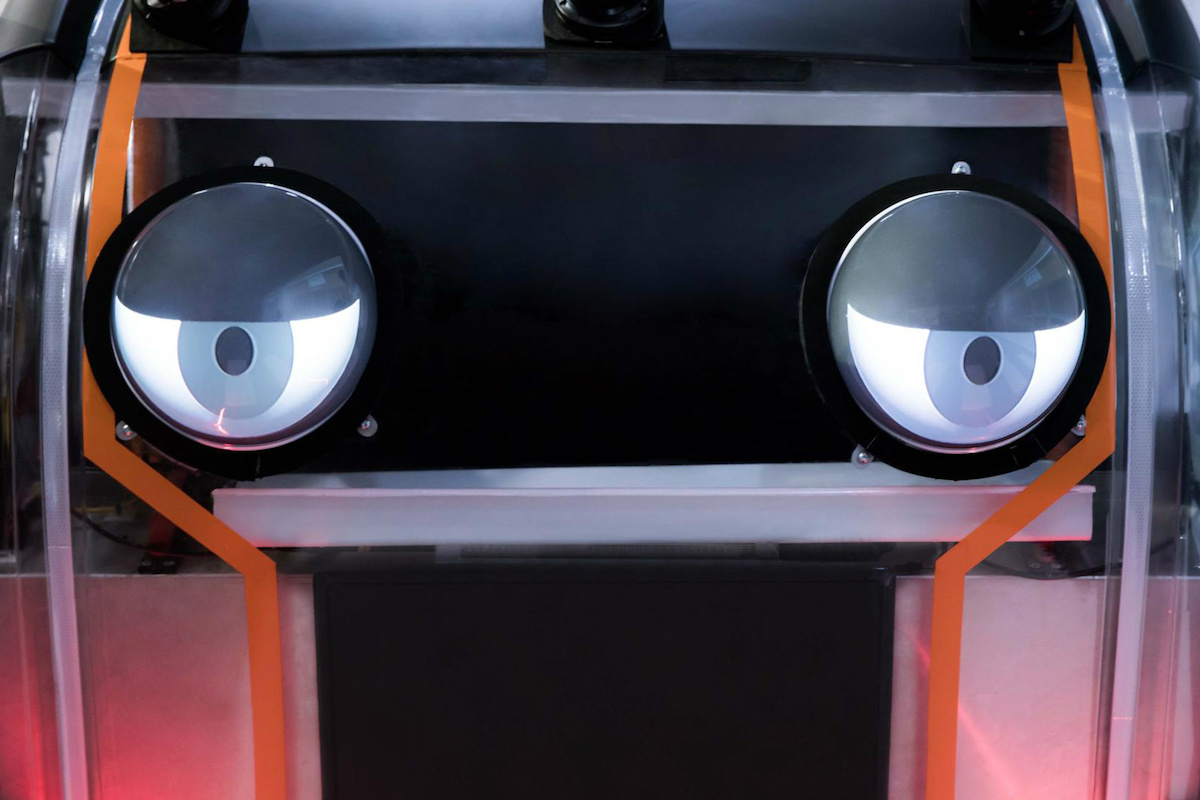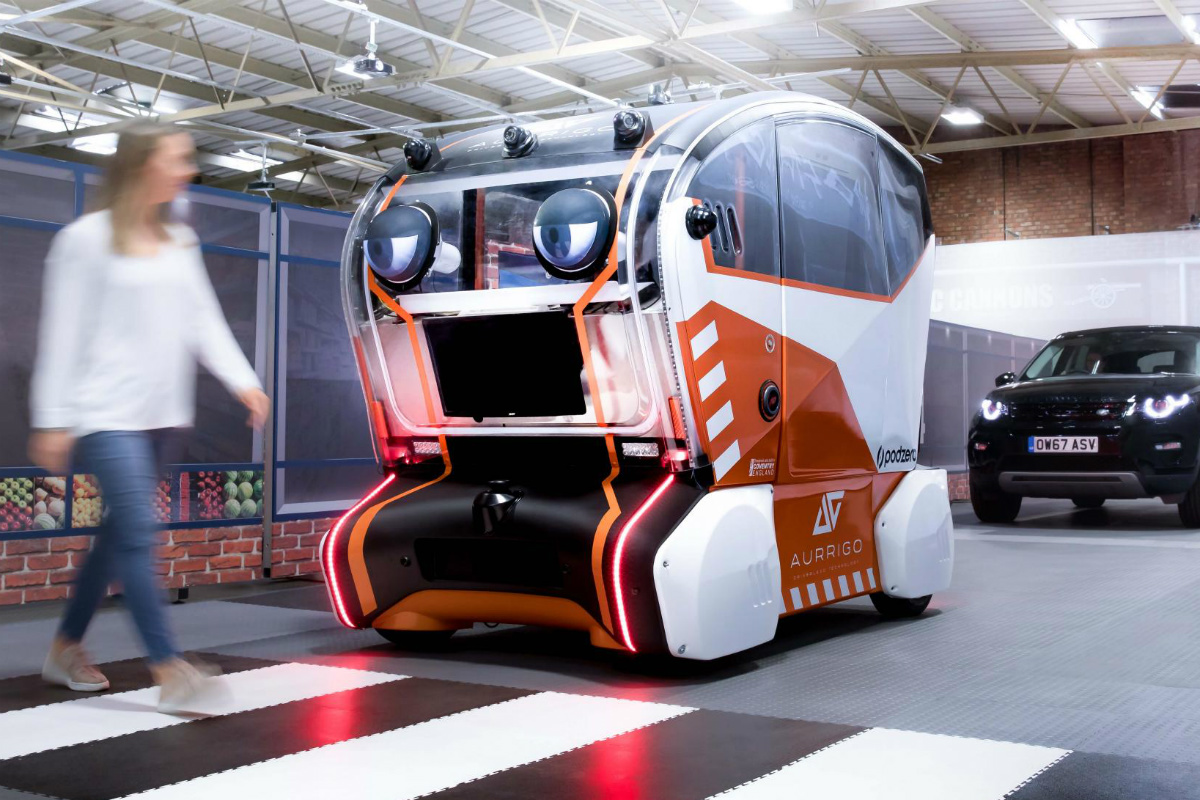Jaguar Land Rover’s “driverless pod with eyes” will either raise a smile or send shivers down your spine, depending on your disposition. But the automaker actually has a very good reason for creating the machine.
Through various simulated street scenarios, researchers hope to work out how much information autonomous vehicles need to share with road users and pedestrians to ensure that people trust the technology.
According to Jaguar Land Rover (JLR), 63 percent of pedestrians have safety concerns about crossing the street with a self-driving car approaching. People’s confidence certainly won’t have been helped by the tragedy in Arizona earlier this year when an autonomous vehicle being tested by Uber hit and killed a woman as she made her way across the street.
“Trust trials”
As part of JLR’s ongoing autonomous-car project, the company has called upon the services of a team of cognitive psychologists to help it learn more about how vehicle behavior affects human confidence in new technology. The so-called “trust trials” form part of JLR’s government-supported U.K. Autodrive project.
This is where the pod’s eyes come in. In tests on a simulated street setup in Coventry, England, psychologists are studying to what extent humans can be reassured by a car that communicates with them.
For example, as the autonomous car approaches a pedestrian who’s about to cross the road, the vehicle’s large LED eyes look straight at the human to indicate that its sensors have spotted them. This should reassure the pedestrian that the vehicle will respond in the expected manner by slowing down to let them safely cross the street.
“It’s second-nature to glance at the driver of the approaching vehicle before stepping into the road,” said Pete Bennett, future mobility research manager at JLR. “Understanding how this translates in tomorrow’s more automated world is important. We want to know if it is beneficial to provide humans with information about a vehicle’s intentions or whether simply letting a pedestrian know it has been recognized is enough to improve confidence.”
JLR has yet to reveal just how helpful its virtual eyes have been for improving pedestrian confidence. Or indeed if it has any plans to add the eyes to its own autonomous vehicle, which it’s already testing on public streets.
Ford has also been looking at how autonomous vehicles might communicate with pedestrians and other road users. In tests last year, the company used a flashing light bar at the top of the windshield that pulsates in different ways to signal intent.
As for JLR, its own ongoing trials are part of a wider study aimed at learning more about how future connected and autonomous vehicles “can replicate human behavior and reactions when driving.”
With that in mind, perhaps JLR should also consider adding a large mouth to the car that sounds off whenever it spots a reckless act by another road user. Though with autonomous cars, road rage should of course be consigned to history.





